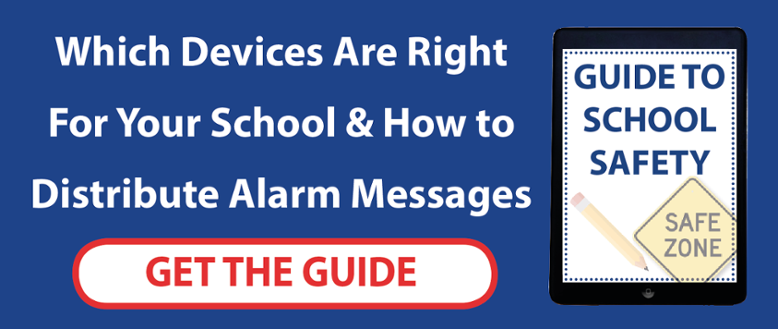
For many educational institutions, student safety is the top priority of management and staff alike, as it is a secure and comfortable environment that allows pupils to perform to the best of their ability. By taking steps to comprehensively eliminate the risk of serious accidents or violent confrontations occurring within the school, teachers can prevent most situations where their students may come to harm. However, a trespasser on school grounds can change all of that and can sometimes pose a real risk to the physical safety of the children, making some way to deal with intruders a necessity.
Whilst most people who wander onto school grounds are there for benign reasons (e.g. scheduled visits by parents, delivery and tradespeople or people who are simply lost), there are those who may seek to cause harm. These can include disgruntled parents or even criminals. Most schools have some basic procedures for dealing with intruders, but these are not always especially effective. However, by looking to modern technology to help, school managers can easily upgrade their intruder response with just a few simple steps.
Typically, staff will be alerted to the presence of an intruder either by a burglar alarm going off or by someone else directly informing them (either verbally or using a phone call). This can create a situation where the response of teachers is slow at best and can result either in the intruder escaping to re-evaluate their approach or in them actually managing to gain further access to the school in order to accomplish their goal. By speeding up the rate at which teachers can alert each other to the problem and then communicate effectively with each other, we can cut out a lot of the confusion that can arise in such a scenario and massively improve response times.
This is where upgrading to a critical alarm management system can make all the difference by simply automating a few crucial steps in the process. Teachers can use their smart devices to raise an alarm via the system in just a few seconds, providing as much relevant information as needed. The system will then in just a few seconds notify other staff members in order to initiate a response. All interaction with the critical alarm management system is done via a dedicated app that can be installed on teachers' smart devices for ease of use.
This then lets them access the system and view each alarm that has been logged and update them with information as needed. Automated notifications are also sent out via the app or text message to designated responders as appropriate (such as first aiders, teachers trained to deal with special needs children etc) and if no acknowledgement of the alarm is received, the system can then escalate the matter to senior staff after a pre-set amount of time has elapsed (thereby ensuring that the matter is dealt with).
As well as enabling more effective communication between teachers, the critical alarm system can also be configured to take advantage of the school's existing security systems as well. Burglar alarms can be integrated with the system, which can then update itself if an alert is triggered by an intruder, allowing senior staff to know if there is an incident even if they are off-site.
Managers are also given greater powers to quickly direct their staff on what to do. The critical alarm management system can be set up to send out pre-arranged instructions in the event of a specific scenario occurring, which managers can send to their employees with just the touch of a button. This means that if complex procedures need to be followed or people need to be prompted into action, they will quickly have the right steps to take sent straight to their smart device. Senior staff can also benefit greatly from the fact that the system records all communications and interactions pertaining to each alarm, enabling events to be analysed afterwards in order to draw lessons and see where performance could be improved. In this manner, staff can benefit from targeted training that enables them to quickly get better at dealing with emergencies.
We’ve established that a comprehensive alarm system is one of the most effective ways to tackle an intruder on school grounds, but what happens in situations where teachers lack the time to log a detailed alarm on the system? This can easily happen if the individual manages to gain access to a classroom and is acting in an agitated manner or is directly threatening violence towards staff or pupils. In such a scenario, tools such as MPERS (mobile personal emergency response devices) can be deployed to get help.
These small gadgets are designed to be concealable and quick to use, featuring a button that will immediately raise a high priority alarm on the system and summon other teaches to their location. This enables a staff member who is confronted with an intruder to try and calm the situation down by not overtly raising the alarm (which may provoke a violent response from the individual) and instead attempting to negotiate with them and keep them from posing a greater danger.
Meanwhile, the MPERS can be discreetly activated and other staff members can be summoned to the location. For teachers who are unwilling or unable to carry the device with them on a daily basis, these devices can be installed in static locations in the classroom (out of sight of students), where they can be easily accessed in an emergency.
Properly upgrading their school intruder alarm system to take advantage of current technology can pay dividends in the long run. ANT makes a large range of safety products which can be tailored to the needs and budget of a school as needed. These upgrades are designed to integrate seamlessly with older systems and procedures, meaning that staff require minimal retraining in order to become proficient in their use and maintenance. Additionally, a critical alarm management system and its associated devices will have wider positive effects on health and safety within any organisation, giving employees the peace of mind needed to properly do their jobs.





